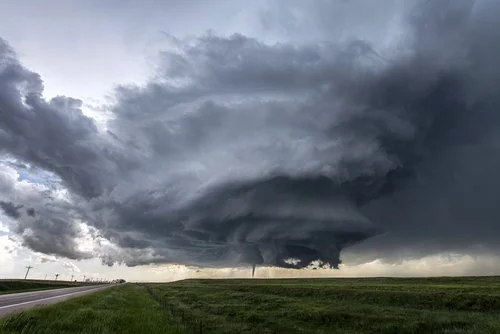Recognizing the Factors Leading to Severe Weather Outbreak
Oklahoma sees the devastation of severe weather outbreaks every year. Several atmospheric components take responsibility for triggering the tornadoes, wind damage, and hail. This post aims to expose all these primary ingredients for your awareness. Furthermore, the need for storm shelters rises in these extreme conditions.
Although people rely on several proposals for defining an outbreak, you can easily spot one by paying attention to the number and density of wind damage, tornado, and hail reports. In general, a map resembling a rash of reports depicts an outbreak. Here are the primary ingredients that cause severe thunderstorms to flare up.
Lack of Stability
Note that every humid and warm day does not induce thunderstorms in most parts of Oklahoma. It is crucial to emphasize the extent of dryness and coldness of the air above the hot surface layer. As per the meteorologists, this moisture and temperature fluctuation gives rise to instability.
This instability is the primary reason for the vigorousness of thunderstorms. In extreme cases, the air currents reach tens of thousands of feet, further intensifying the problem. People have to rely on storm shelters for their safety.
Contribution of Moisture
Moist and warm air in the lowest atmospheric levels adds fuel to the thunderstorms. This fact would make sense as humid and warm days commonly experience the wrath of thunderstorms. In short, the warmth and humidity of the air lead to severe weather outbreaks.
Fronts and Jet Streams
Several atmospheric features invite the occurrence of a large number of thunderstorms. The jet stream plunges are known to induce low-pressure systems. Due to this, the warm and cold fronts shift towards the east, pulling the highly-intense humid and warm air northward. As the air in the jet streams is very cold, instability becomes a significant complexity.
Wind Shear
Thunderstorms' sinking and rising air currents are known as downdrafts and updrafts. These downdrafts usually carry the thunderstorm's rain. For example, the ordinary midsummer thunderstorms in Oklahoma develop and then rains out (because the downdraft chokes off the updraft).
In the case of severe weather outbreaks, the variation in wind speed to the jet stream level might be tremendous. This wind shear often leads to the tilting of thunderstorms. This problem prevents the downdraft from choking off its updraft, making the outbreaks last longer.
Helping You Arrive on the Safe Side
EF5 Tornado Shelters help you and your loved ones prepare for the severe stormy conditions. Due to the unpredictability of danger, people need to rely on the best storm shelters. Our professionals assure peace of mind when a tough time demands your attention.

